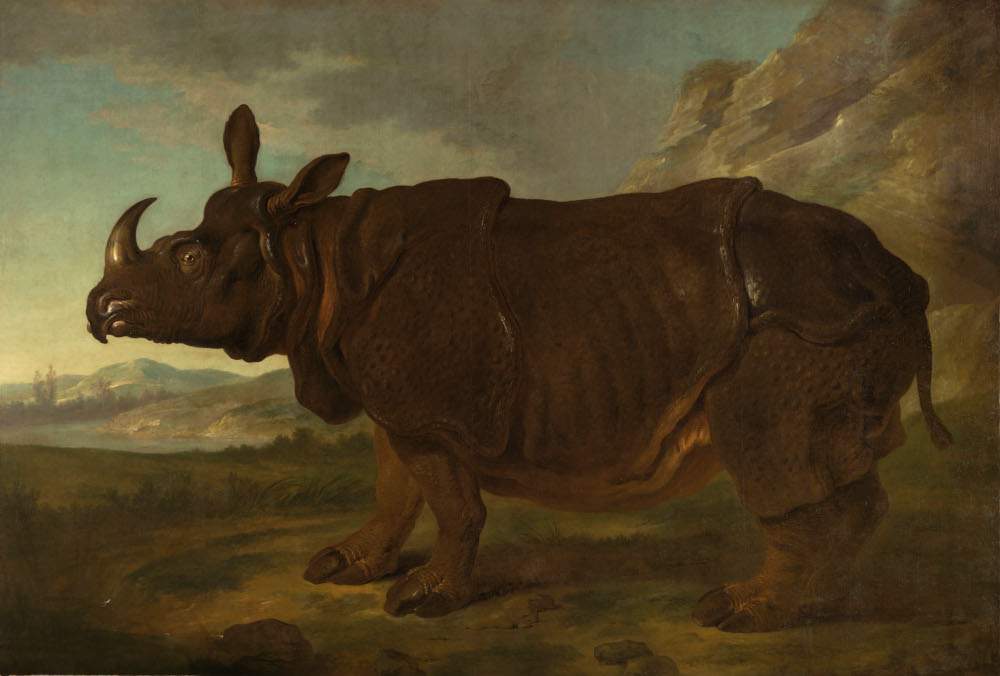The Rijksmuseum in Amsterdam is devoting an exhibition from September 30, 2022 to January 15, 2023 to Clara, the most famous rhinoceros in history. Clara, or Miss Clara as she was called, became the world’s most famous rhinoceros when she was transported to Europe in the 18th century from India, her place of origin.
The exhibition aims to illustrate how not only scientific knowledge but also art has contributed to changing the conception and perception of the relationship with animals, thanks in part to the dissemination of works of art. In fact, sixty objects including paintings, drawings, medals, sculptures, books, clocks and a mug, many of them visible for the first time, will be on display at this exhibition. Among the many works dedicated to Clara is the first European print of a rhinoceros made by Albrecht Dürer in 1515, as well as a life-size portrait of Clara painted by Jean-Baptiste Oudry from 1749.
The exhibition is made possible by a private donor and the Rijksmuseum Fund.
Clara is not the first rhinoceros to appear in Europe, but she is certainly the most famous. In 1741 she landed in Nieuwendam near Amsterdam after a long journey from India. Its owner, Douwe Mout van der Meer, showed it to anyone willing to pay to admire it. With her retinue, for about seventeen years, Clara traveled across Europe in a wagon built especially for her, touching almost every major city of the time, from Vienna to Paris, Naples to Rome, Venice, and Copenhagen. During breaks in her travels through Dutch territory Clara is put in a plot of land north of Amsterdam. She would later die in London in 1758.
The astonishment and interest aroused by Clara stemmed from the fact that no one had ever seen a live rhinoceros. Until Clara’s arrival in Europe, the only known image of a rhinoceros was a print made in 1515 by Albrecht Dürer. The work was based on a sketch of a rhinoceros that had stayed in Lisbon for a short time; but it was not a very accurate sketch to the point that a horn is added to the animal’s back in the print, with a skin similar to a breastplate. The situation changes with the arrival of Clara, as she allows them to delve deeper into what a rhinoceros looks like and to draw a more realistic picture of it. Scholars examine her closely from head to tail, and artists are fascinated by every detail. Numerous images of Clara are made, in all shapes and materials. Some of the most significant, such as the life-size portrait painted by Jean-Baptiste Oudry in Paris in 1749 (Staatliches Museum Schwerin), a painting by Pietro Longhi where Clara is shown to the public masked during the Venetian Carnival of 1751, a large marble sculpture by Ghent artist Pieter Anton Verschaffelt from the Rothschild Collection at Waddesdon Manor, and a very rare clock, from a private Dutch collection, by the Parisian bronze artist and watchmaker Jean-Joseph de Saint-Germain, in which Clara forms the supporting element.
The exhibition design for Clara the Rhinoceros was created by set designer Theun Mosk | Ruimtetijd.
For info: https://www.rijksmuseum.nl/
Image: Jean-Baptiste Oudry, Rhinoceros (1749; Schwerin, Staatliches Museum)
 |
| The Rijksmuseum in Amsterdam dedicates an exhibition to the most famous rhinoceros in history |
Warning: the translation into English of the original Italian article was created using automatic tools. We undertake to review all articles, but we do not guarantee the total absence of inaccuracies in the translation due to the program. You can find the original by clicking on the ITA button. If you find any mistake,please contact us.